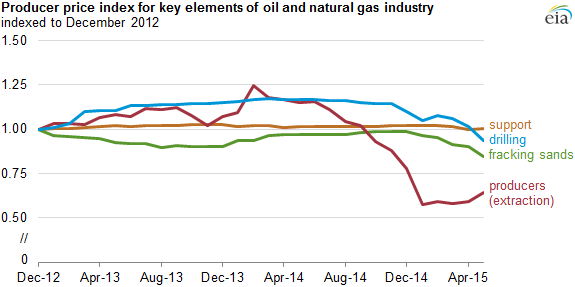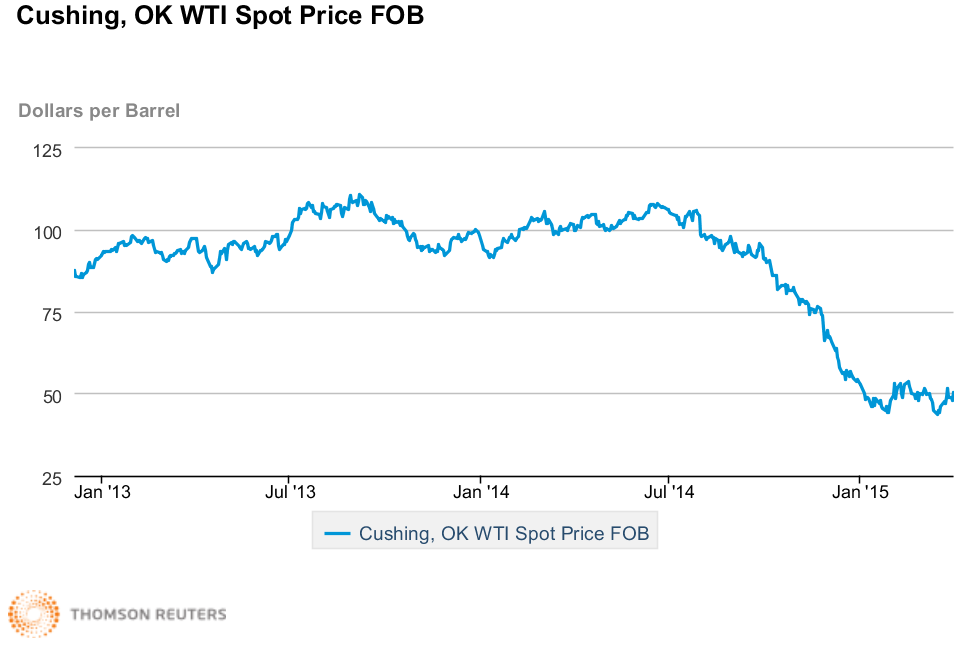Extraction pricing feeling the most pressure
The decision by E&P companies to cut capital expenditures and increase efficiencies following the dramatic fall in oil prices put downward pressure on other sectors of the oil and gas industry.
The Bureau of Labor Statistics (BLS) tracks the rates oil and natural gas service companies are receiving for goods and services through its Producer Price Index (PPI). From June 2014 to May 2015, when oil and gas prices as measured by the PPI fell by 49%, service industry prices followed suit:
- Rates for drilling activity fell 19.6%
- The price of sands used as proppant for hydraulic fracturing fell 12.5%
- Support activities, which include the surveying, cementing, casing and otherwise treating wells, fell 1.4%
The PPI illustrates how prices charged by firms throughout the industry respond to changes in commodity prices. The Energy Information Administration (EIA) compiled the information from the PPI in order generate this graph, which illustrates the change in prices companies are charging for their goods in services in order to cope with the current low commodity price environment.
While the PPI does not necessarily represent the slowdown in business activity, the price reductions reflect both weakened demand for the services offered and heightened industry competition to maintain market share, says the EIA.
For the first quarter of 2015, ending March 31, a group of 14 drilling companies represented in the OSX index experienced a first-quarter year-over-year decline of 91% in net income to $352 million from $4.0 billion the year before. In the same period, a larger group of 57 North American independent oil and gas producers experienced a collective year-over-year decline in net income of 574% to ($13.9 billion) loss, from $2.9 billion in net income.




